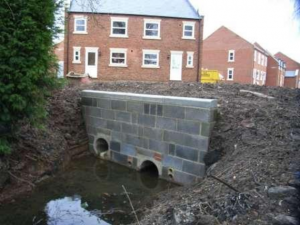
Development
 Development Control and Regulation
Development Control and Regulation
By regulating development we can secure the efficient working of the drainage system now and for the future. This is done by reasonable application of the Board’s Byelaws and the Land Drainage Act 1991. We aim to work closely with Landowners, Developers and Local Planning Authorities as well as with other Risk Management Authorities, such as the Environment Agency, Anglian Water and Lead Local Flood Authorities.
Planning and Byelaw Strategy
The Group’s Planning and Byelaw Strategy has been complied to provide:
- Guidance on how the Board will engage with planning applications within their Internal Drainage District (“IDD”) or that have the potential to significantly impact their IDD;
- Guidance to organisations and individuals on the Board’s regulatory requirements and processes, including information on the policies against which it will assess and determine applications.
The Planning and Byelaw Strategy also contains Standing Advice for Development within an Internal Drainage District (please see Section 3).
For site specific advice (including consultations for planning applications) please contact our team via planning@wlma.org.uk.
Watercourse Maintenance
Generally, watercourses within our Internal Drainage District are the responsibility of riparian or private owners to maintain, repair and improve as necessary to ensure effective drainage (unless they have been vested in some other authority). For more information, please see section 7 of the Planning and Byelaw Strategy.
Arterial Watercourses
Arterial Watercourses are of arterial importance to the Internal Drainage District and will normally receive maintenance from the Board. This maintenance is not necessarily carried out on an annual basis but on a recurrence deemed necessary to meet water level management requirements. The designations are made under permissive powers and there is no obligation for IDBs to fulfil any formal maintenance requirement and there is no change in the ownership or liability associated with the watercourse. Arterial watercourses are also protected to a greater extent by the Board’s byelaws.
For more information, please see section 7 of the Planning and Byelaw Strategy.
Arterial Watercourses are shown on the Maps of the Board’s Area webpage.
Land Drainage Consent
The following regulatory controls are most frequently used by the WMA Boards:
- Byelaw 10 regulates works within 9 metres of drainage or flood risk infrastructure (including arterial watercourses). The principle aim of this byelaw is to ensure watercourses can be maintained by the Board now and in the future without restrictions being placed on access, and to ensure operatives are aware of third party structures when undertaking maintenance.
- Byelaw 3 regulates the introduction of water (flow or volume) to the Internal Drainage District.
- Section 23 of the Land Drainage Act 1991 regulates works to alter a watercourse (including culverting). If the site is within an IDD the relevant IDB is the regulatory authority for these works.
For more information please, including specific policies, see Sections 4 and 5 of the Planning and Byelaw Strategy.
If you are proposing works which require prior written consent from the Board, please complete an Application and send it to us. If you would like any further information on whether you need the Board’s consent to do something, or on how we will consider your application, please contact the team via planning@wlma.org.uk.
Application Form (pdf) | Application Form (docx)
Application Guidance
Charges and Fees
Frequently Asked Questions